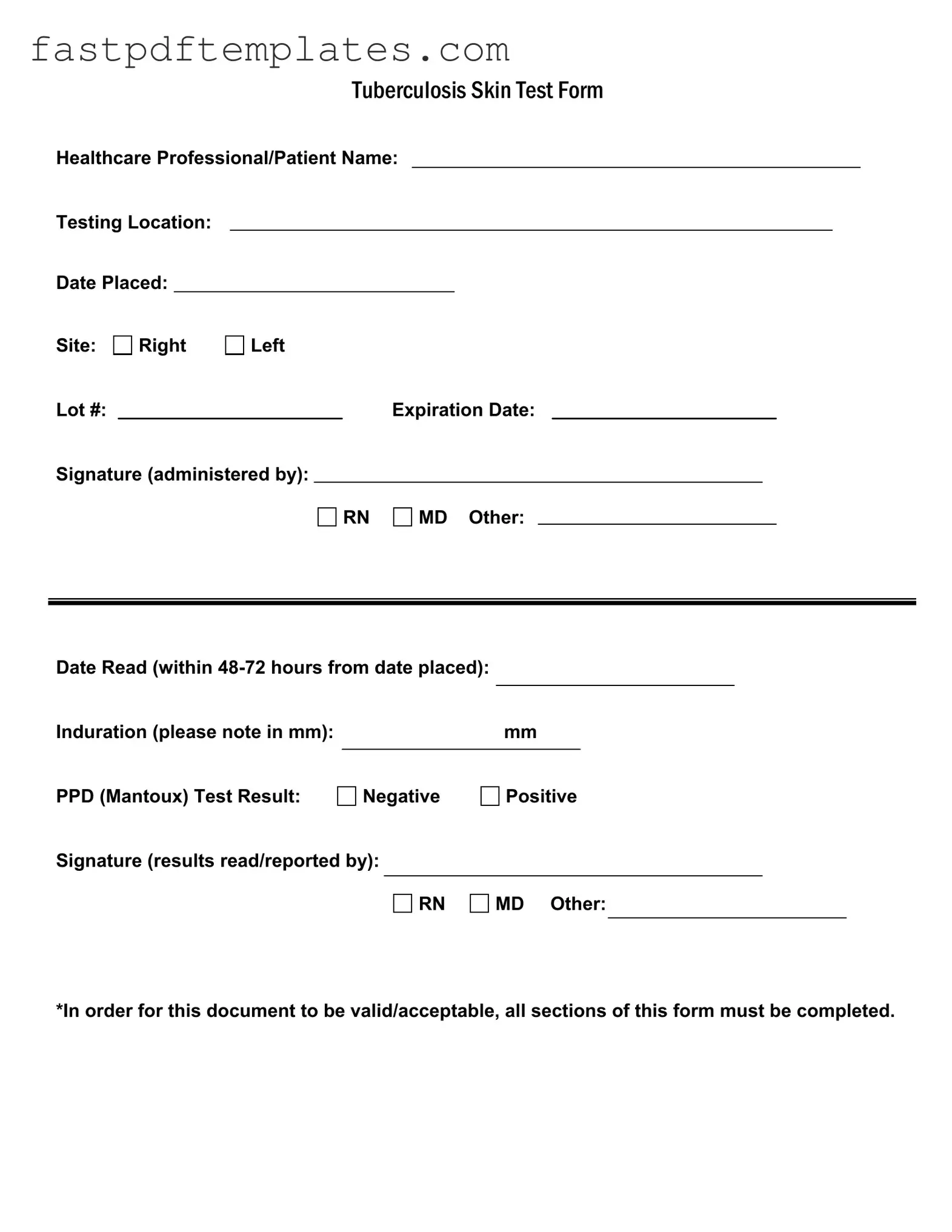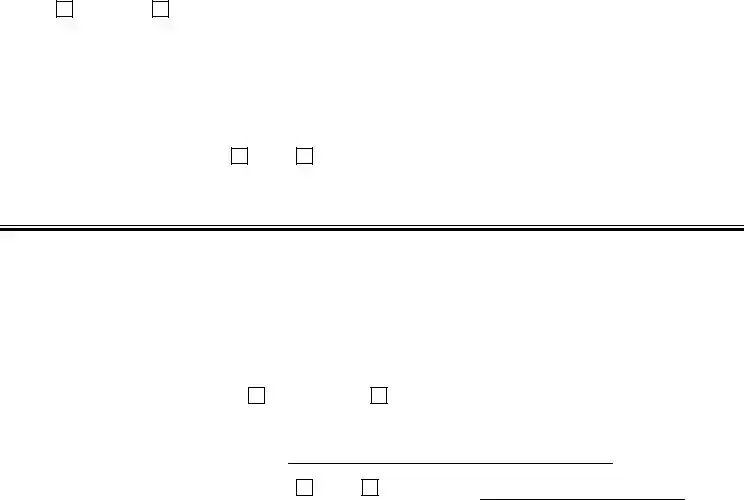The Tuberculosis (TB) Test form shares similarities with the Vaccination Record. Both documents serve as official records of medical tests or vaccinations administered to individuals. They include essential details such as the healthcare provider's name, the date of the test or vaccination, and the results. Each document requires the signature of a qualified professional, ensuring authenticity and compliance with health regulations. Additionally, like the TB Test form, the Vaccination Record often includes a section for noting any adverse reactions or follow-up requirements.
Another document akin to the TB Test form is the Allergy Testing Form. This form, like the TB Test form, captures vital patient information and the details of the test conducted. It includes the healthcare provider's signature and the date the test was performed. Both forms require timely reporting of results and may necessitate follow-up actions based on the findings. The Allergy Testing Form also emphasizes the importance of completing all sections to ensure validity.
The Blood Test Results form is also comparable to the TB Test form. It documents the results of blood tests, including important patient identifiers and the healthcare provider's signature. Similar to the TB Test form, it outlines the date the test was conducted and the interpretation of results. Both documents play a crucial role in patient care, as they inform further medical decisions based on the outcomes reported.
The Medical Clearance Form is another document that resembles the TB Test form. This form is often required for employment or participation in certain activities, and it verifies that an individual has met specific health criteria. Like the TB Test form, it includes the healthcare provider's name, the date of assessment, and their signature. Both forms serve to confirm that an individual is fit for a particular purpose, emphasizing the importance of thorough completion to be considered valid.
The Health Screening Form is similar in function to the TB Test form. It collects comprehensive health information from patients, including results from various tests. Both documents require the signature of a healthcare professional and include the date of the assessment. They are essential for establishing a patient's health status and may influence future healthcare decisions. Each form underscores the necessity of filling out all sections to maintain accuracy and reliability.
The Patient Consent Form shares commonalities with the TB Test form, particularly in its purpose of documenting patient acknowledgment and agreement for medical procedures. Both forms require clear identification of the patient and the healthcare provider. They include signatures to validate consent and ensure that patients understand the implications of the tests or treatments being administered. The Patient Consent Form also emphasizes the importance of thoroughness in completion to uphold legal and ethical standards.
Lastly, the Health History Form is comparable to the TB Test form in that it gathers critical information about a patient's medical background. This form, like the TB Test form, requires patient identification and healthcare provider details. Both documents aim to provide a comprehensive overview of the patient's health status, facilitating informed medical decisions. The Health History Form also highlights the need for complete responses to ensure the accuracy of the information collected.

